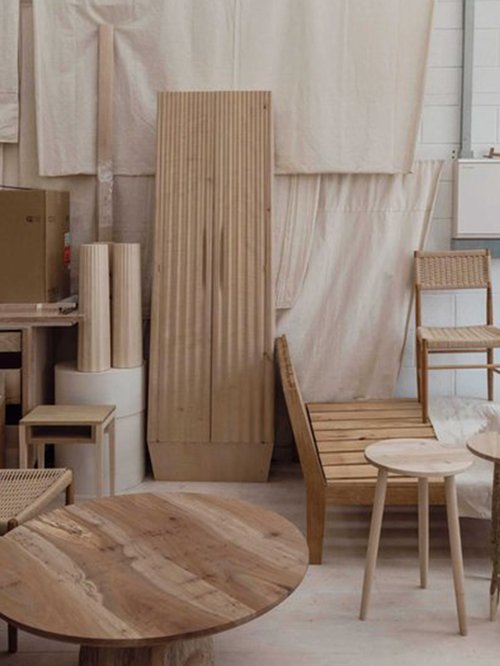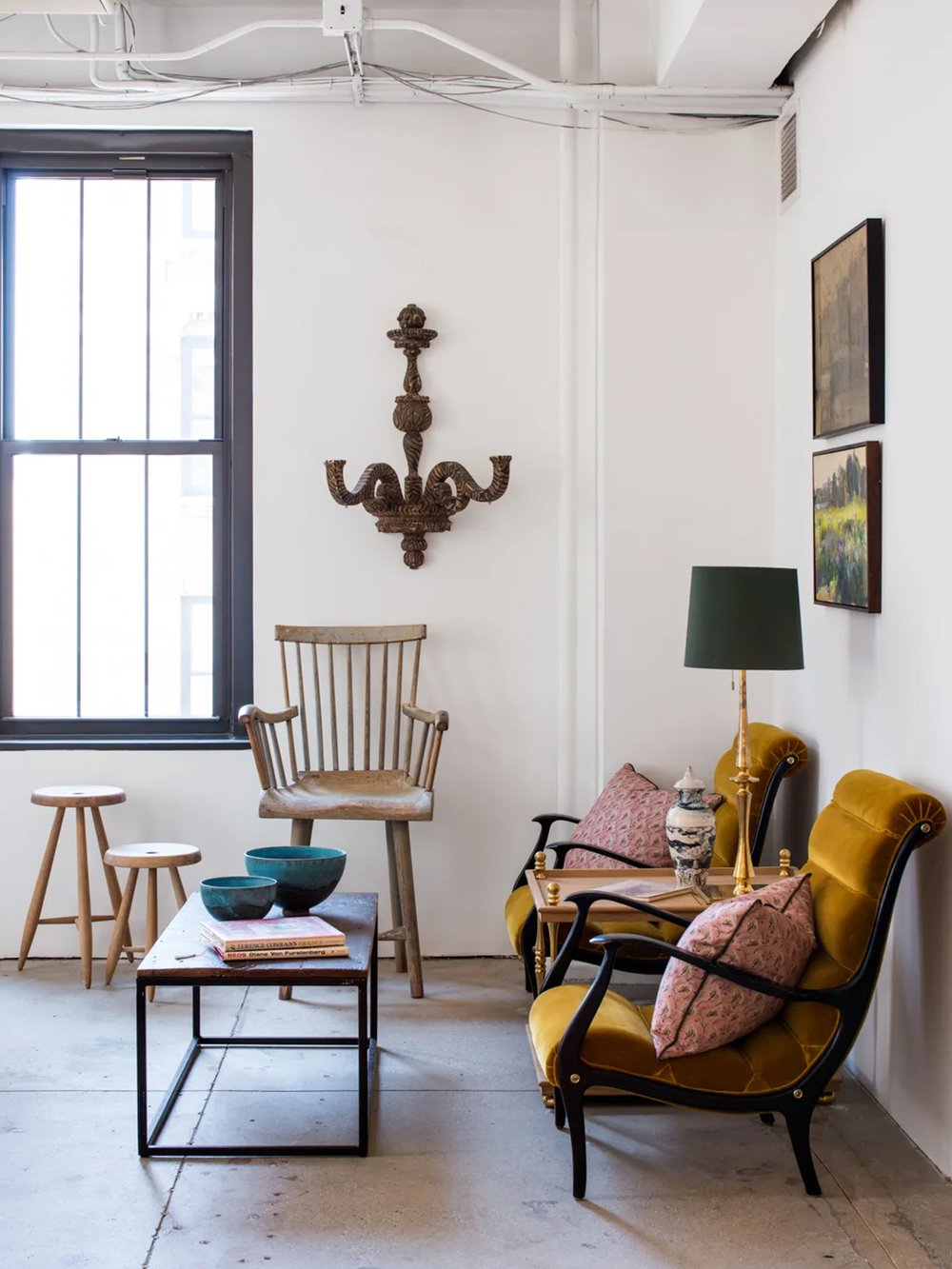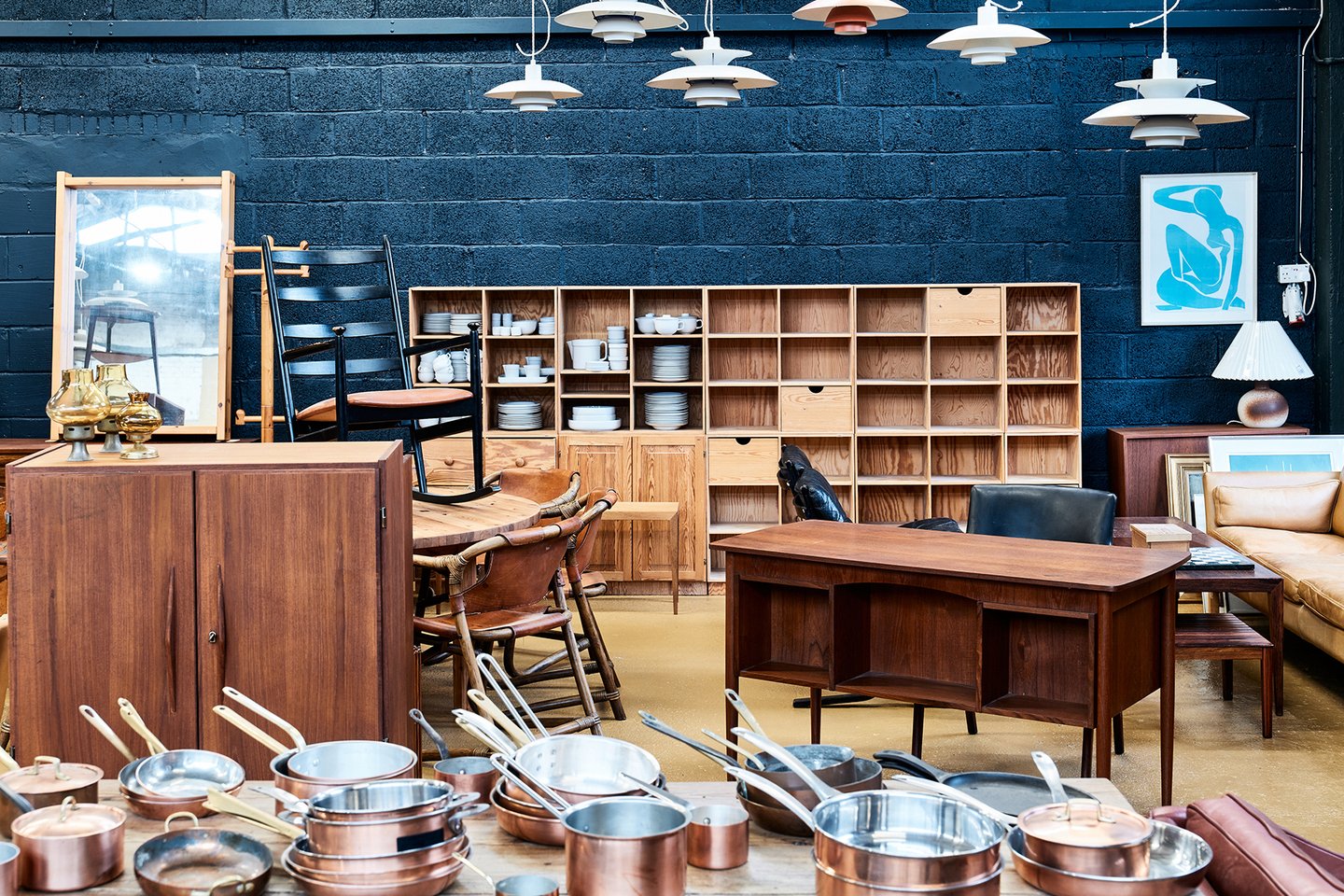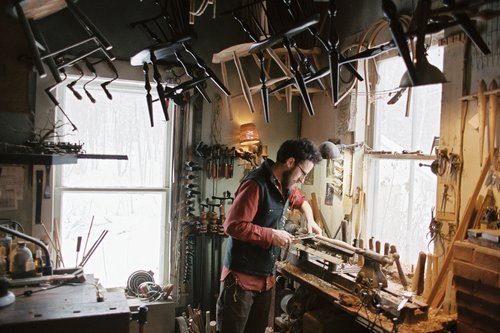
5 min read
Inside the Workshop: Sebastian Cox
On a recent trip to the UK, we had the chance to meet designer, craftsman and environmentalist Sebastian Cox, to learn more about his studio and have a tour of his workshop.

4 min read
WLLW explores the advantages of opting for vintage furniture and finding pieces that both enhance our wellbeing and tell a story.
For those passionate about interiors, there’s nothing quite like the hunt for the perfect piece of furniture to complement a design scheme. The hunt for a vintage gem is particularly exciting, as it comes with a unique narrative and provenance. In our age of social media and mass production, newly-made items can often quickly feel oversaturated and there has been a shift away from the copy-and-paste interiors found on Instagram. The joy of owning a vintage piece is tied into its one-of-a-kind history and distinctive style it can add to a room.
What is vintage, though? And how does it differ from antiques? Vintage furniture typically refers to pieces that are between 20 to 100 years old and implies a nostalgic appeal. It can encompass a range of styles from different decades, such as mid-century modern from the 1950s or the bohemian styles of the 1970s. Antique furniture, on the other hand, refers to pieces that are at least 100 years old. These items are often valued for their historical significance and rarity. The stigma that once existed around purchasing second-hand items has largely eased. This may indicate shifting perceptions towards waste as well as the proliferation of resale platforms. Buying vintage has therefore never been easier.
Vintage furniture is often synonymous with high-quality craftsmanship and attention to detail. Many pieces were handcrafted using traditional methods that have been often overlooked in today’s fast-paced market. This craftsmanship not only ensures the durability and longevity of the furniture but also imbues each piece with layers of character. Buying fewer items built to last, rather than many cheaply-made pieces over the years, supports a culture of conscious consumption. By appreciating and maintaining these pieces, that have been gently yet skilfully repurposed, we help keep the legacy of skilled artisans alive.



The sustainability factor is an important one when considering purchasing vintage. Choosing pre-owned furniture reduces the demand for new pieces, thereby decreasing the need for manufacturing and the environmental strain associated with it. The production of new furniture involves considerable resource extraction, energy consumption and emissions. Fast furniture companies frequently exacerbate deforestation and are often associated with dubious sourcing methods. A notable example is the scrutiny IKEA faced in 2019 when Earthsight's investigation highlighted allegations of illegal logging within Ukrainian forests. By reusing existing pieces we can significantly lower our carbon footprint while cultivating interiors that are both ethical and beautiful.
"By appreciating and maintaining these pieces, that have been gently yet skilfully repurposed, we help keep the legacy of skilled artisans alive."
Aside from sustainability, vintage furniture can often benefit our wellbeing. Older pieces are less likely to be made with synthetic materials and more likely to feature natural, non-toxic finishes whereas modern furniture often contains Volatile Organic Compounds (VOCs) and other chemicals. These substances can off-gas into the air, contributing to indoor air pollution and potentially causing health issues such as headaches, dizziness and respiratory problems. Vintage furniture, having already undergone years of off-gassing, typically presents a much lower risk of chemical exposure. This makes it a safer choice for maintaining a healthy indoor environment. However, there are health risks to consider when buying vintage pieces. Substances such as mercury and lead were sometimes used in the manufacturing processes, for example – we include a checklist at the bottom of this article for what to look out for.



The shift towards valuing vintage furniture is increasing. A report shows that 31 percent of Millennial and Gen Z consumers stated that they became more interested in purchasing vintage or antique furniture online during the pandemic. Vintage treasures often represent a sense of authenticity, which, along with their healthy and sustainable credentials, can transform our homes into unique spaces that represent their inhabitants. For these reasons we believe that the beauty of the past and investing in heritage pieces made to last are to be celebrated.
Mercury was historically used to weight clock pendulums and lamp bases, provide a reflective surface behind the glass of old mirrors and measure temperature changes in barometers and thermometers. Mercury vapor can pose significant health risks. As seals age or if an item is moved, damaged or dropped, mercury can leak, necessitating prompt attention and ventilation to mitigate these risks.
Lead is very common in vintage dishware, ceramics, silverware, jewelry, antique toys, and furniture. Many vintage products found at thrift stores or antique shops were made long before current federal regulations on toxic substances were established. It was only banned in the USA in 1978 which means layers of lead paint may still exist under newer coats.
Lead paint is regularly found in vintage items more than 40 years old, but sales of these items aren't regulated, leaving many buyers unaware of the threat. Lead poisoning remains common in the US, with 1 in 40 children aged 1-5 having blood lead levels considered unsafe. Lead testing kits are available to check for its presence.
An old sofa or upholstered chair can release toxins that degrade indoor air quality through its foam, glues and fabric treatments – and dust can carry these toxins. Additionally, antiques may harbor mold and mildew. While buying used solid wood furniture can help avoid introducing new chemicals into your home, old upholstered furniture may not be a safer option unless it has a clean history, is free of mold, and was made before flame retardants were required. Alternatively, reupholstering with natural materials can make it safer.




Photography: Timothy Ragan, Laura Resen, Counter-Space, Soap and Salvation, Ancien et Jolie, Nickey Kehoe, Kate Jordan, Aelfred, Christian Banfield
Further Info


5 min read
On a recent trip to the UK, we had the chance to meet designer, craftsman and environmentalist Sebastian Cox, to learn more about his studio and have a tour of his workshop.

4 min read
WLLW speaks with Vermont's Sawyer Made on blending traditional woodworking with craftsmanship in Windsor chairmaking.